
For a horticultural and culinary adventure this stay-at-home spring, try planting a few of the following relatively unknown, easy-to-grow greens, herbs, and veggies that also feature colorful leaves or fruits. Within a few weeks, you’ll have a rainbow of edibles representing a broad spectrum of the world’s cuisines.
Amaranth

Hopi Red Dye Amaranth (Amaranth cruentus variety) – Seed of this native heirloom variety germinates readily and grows rapidly into stately plants clad with burgundy-purple leaves. Leaves harvested from young seedlings make a colorful and tasty addition to salads, omelets, and stir-fries. In late summer, the 4- to 6-foot plants are topped with showy 1- to 2-foot-long flower tassels that turn beet-red as they mature. The flowers are followed by edible (and nutritious) seeds that are good for sprinkling into stews or scattering in a hot saucepan to produce amaranth popcorn. Seed can be sown directly in the garden in spring, or started under lights indoors in Fafard® Natural & Organic Potting Mix.
Cherry Vanilla Quinoa
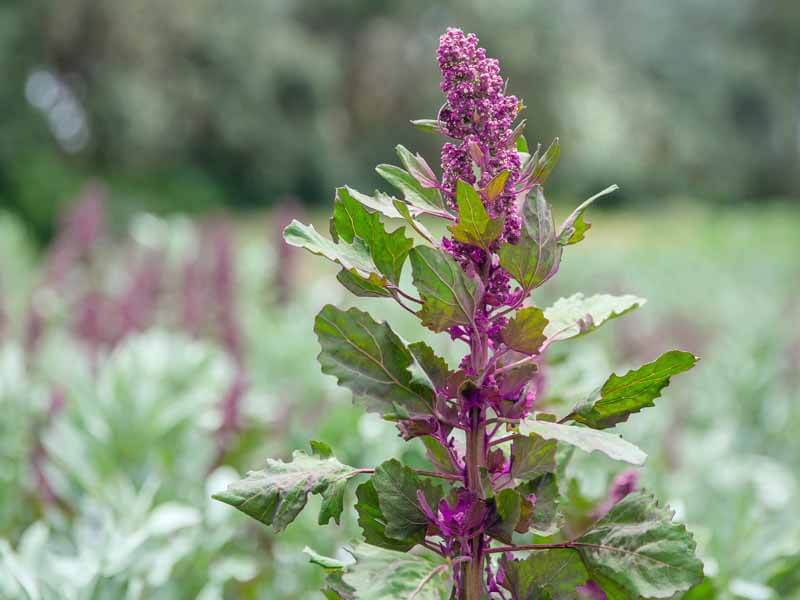
Cherry Vanilla Quinoa (Chenopodium quinoa variety) – Here’s another New World veggie that yields tasty young greens and develops colorful seed heads on towering plants. The creamy-yellow to rose-pink seeds ripen in mid to late summer, offering all the culinary virtues of store-bought quinoa. As with Hopi Red Dye Amaranth, plants typically self-sow, but you may want to save a few seeds for planting next year just in case.
Red Orach
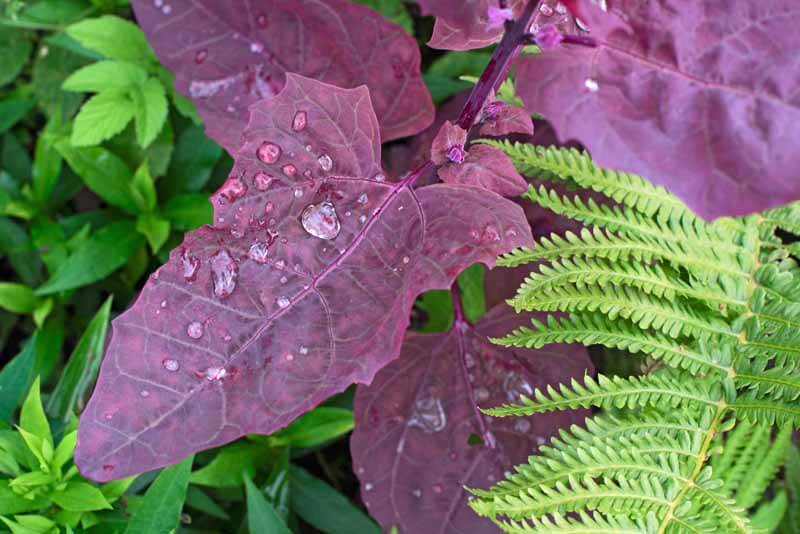
Red Orach (Atriplex hortensis var. rubra) – As spinach is getting bitter and bolty in the heat of summer, orach is just reaching its statuesque 5- to 10-foot prime, bearing masses of succulent leaves that serve as a more than passable spinach stand-in. Red-leaved varieties such as ‘Ruby Red’, ‘Red Flash’, and (of course) ‘Red Orach’ bring extra ornamental value to the table (and to the garden). Plant the seeds directly in the soil in spring, and then again in summer for a repeat fall crop – just as gardeners in much of Europe have done since ancient times.
Bloody Dock
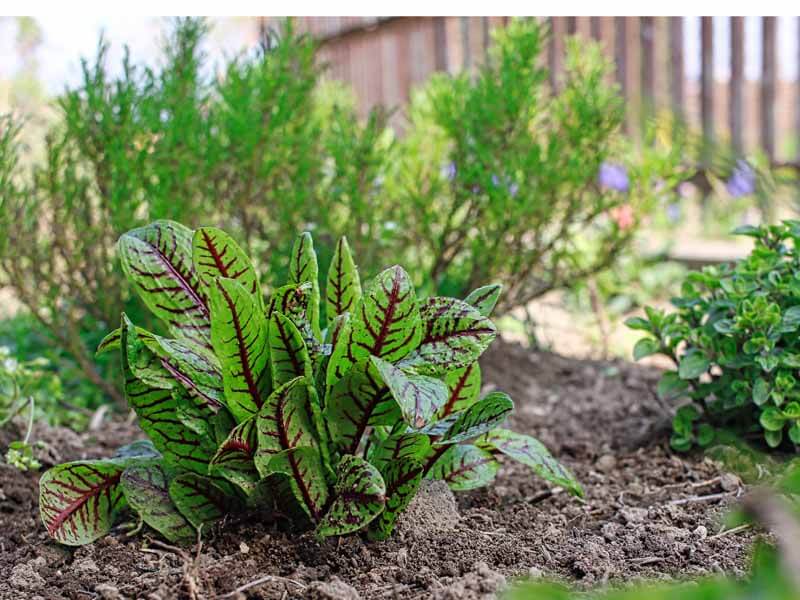
Bloody Dock (Rumex sanguineus) –A hardy, long-lived perennial that germinates rapidly from a spring or fall sowing, bloody dock produces clumps of bright green leaves ornamented with boldly contrasting red-purple veins and stems. The piquant, sour-flavored leaves add zest to salads, stir-fries, and egg dishes. They can be continually harvested throughout the growing season, in “cut and come again” fashion. Bloody dock makes an ideal edging plant for edible gardens, and it also works well as a front-row foliage accent in perennial borders or an accent plant for containers filled with Fafard Ultra Outdoor Potting Mix.
Shiso
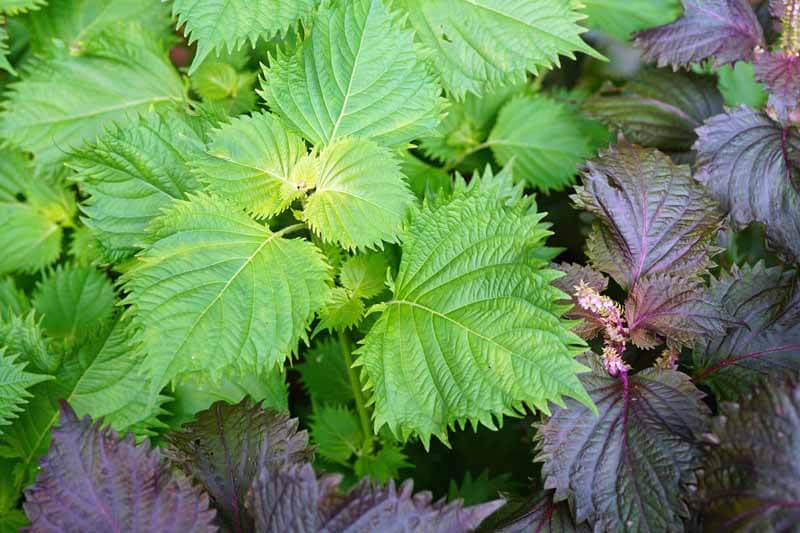
Shiso (Perilla frutescens) – In Japan, the broad, rounded, spicy-flavored leaves of shiso are pickled or dried or powdered or added to fish dishes or used for any number of other culinary purposes. Some varieties of shiso are also highly ornamental, possessing ruffled, purple, or multi-colored leaves. Plants germinate and grow rapidly from a late-spring sowing, and reliably (and sometimes prolifically) self-sow if their branching clusters of inconspicuous flowers are left to develop.
Purple Mizuna
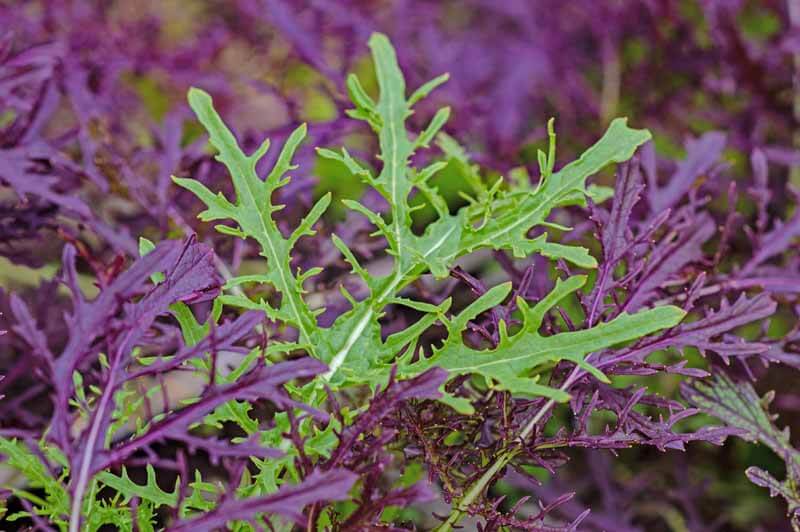
Purple Mizuna (Brassica rapa var. nipposinica) – The jagged purple leaves of this Japanese potherb stand in erect clumps, giving it a showy and distinctive feather-headdress look. With their mild mustardy flavor, the leaves bring color and piquancy to salads and stir-fries. Several handsome variations on purple mizuna can be found in seed catalogs, going under an assortment of names. The cultivar ‘Beni Houshi’ has green leaves with striking violet-purple stems and veins that strengthen in color in cool weather. The leaves of ‘Miz America’ are deep maroon-purple. Plant mizuna seeds in the garden in early to mid-spring for a summer-long cut-and-come-again harvest. You might want to re-sow it in late-summer for a fresh fall crop.
Swiss Chard
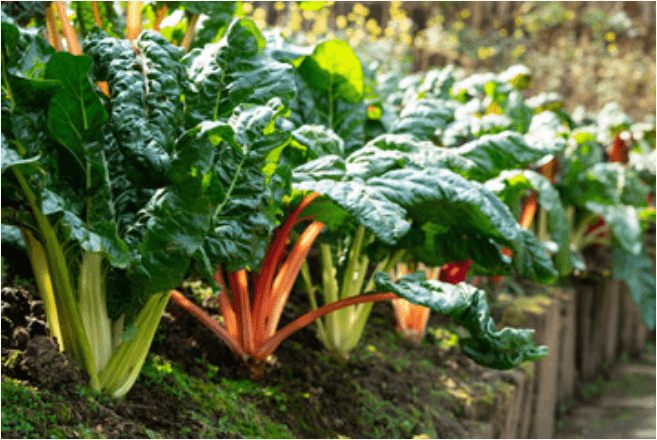
A leafy variant of garden beets, Swiss chard (Beta vulgaris var. cicla) is high in nutritional value and ease of culture. Produced continually from summer until hard frost, the stalked, crinkled leaves are excellent in salads when young, or for sautéing and stir-fries when mature (about 60 days after sowing). Several varieties of Swiss chard, such as ‘Bright Yellow’, ‘Ruby Red’, and ‘Bright Lights’, have colorfully stemmed and veined foliage that make a decorative addition to annual beds and other ornamental plantings. Plants grow (and germinate) best in warm, fertile conditions. Their leaves taste sweeter and more flavorful in cool weather.
Malabar Spinach
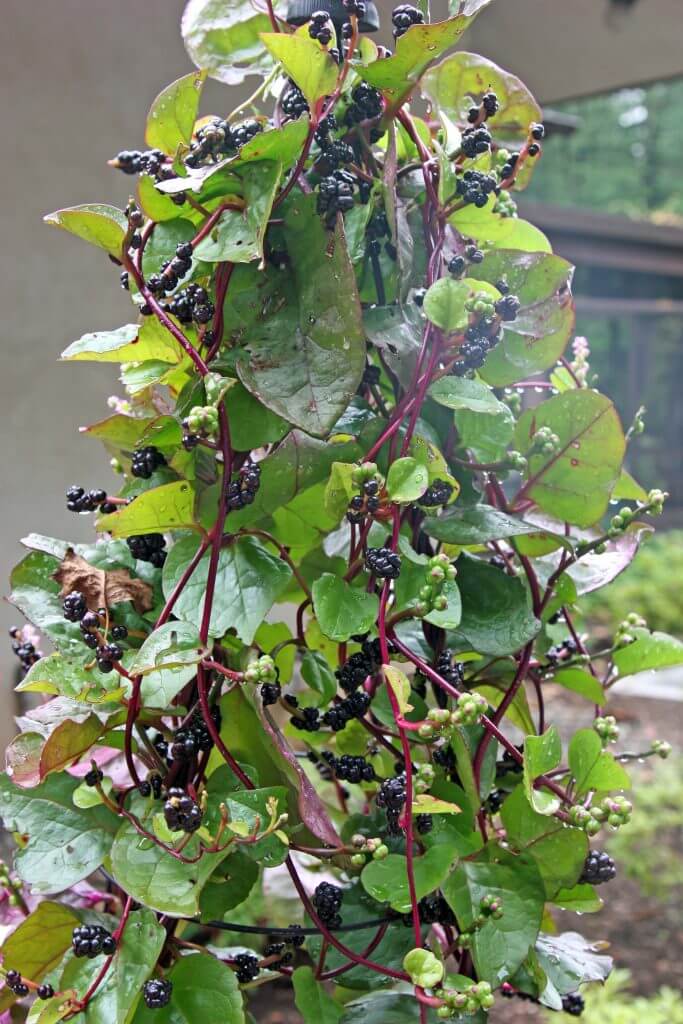
Red Malabar spinach (Basella rubra) – Long grown in South Asia as a culinary and dye plant, Malabar spinach thrives in the heat of summer when many other greens are flagging. The wine-red, twining stems of this vigorous climber are clothed with fleshy, purple-flushed leaves that serve as a hot-weather spinach substitute. Curious stalks of little cone-shaped pink flowers ripen to currant-purple berries in late summer, which are traditionally used in dyes and infusions. Sow seeds or dried fruits directly in late spring, after the last frost date.
Vining Ornamental Beans
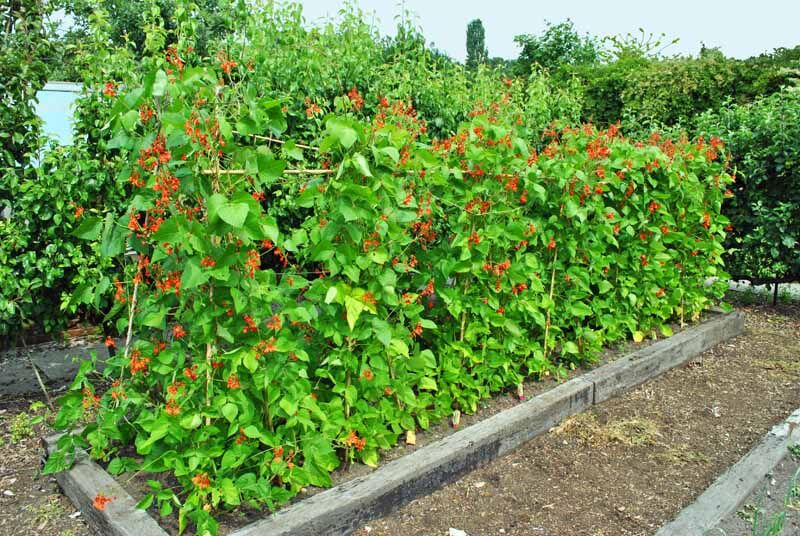
Purple green beans (Phaseolus vulgaris) – “Green” beans with showy purple pods come in many varieties, including the bush bean cultivars ‘Royal Burgundy’, ‘Royal Purple’, ‘Amethyst’, ‘Purple Queen’, and ‘Purple Teepee’; and climbing varieties ‘Trionfo Violetto’ and ‘Rich Purple Pod’. The beans turn green when cooked, but young beans are splendid for adding flavor and color to salads. Sow beans directly in the garden in late spring after the soil warms.
The red-flowering scarlet runner bean (Phaseolus coccineus) forms far-reaching vines laden with red flowers that develop into beans that taste good when harvested when young. The dried beans are also useful in soups. Just be sure to provide the vines with trellising or a strong fence that they can clamber up or across.
Any of these ornamental edibles can be added to the landscape to convert it into a partially edible garden. That would be a bonus when trips to the grocery store require heavy sanitation, face masks, and social distancing.

